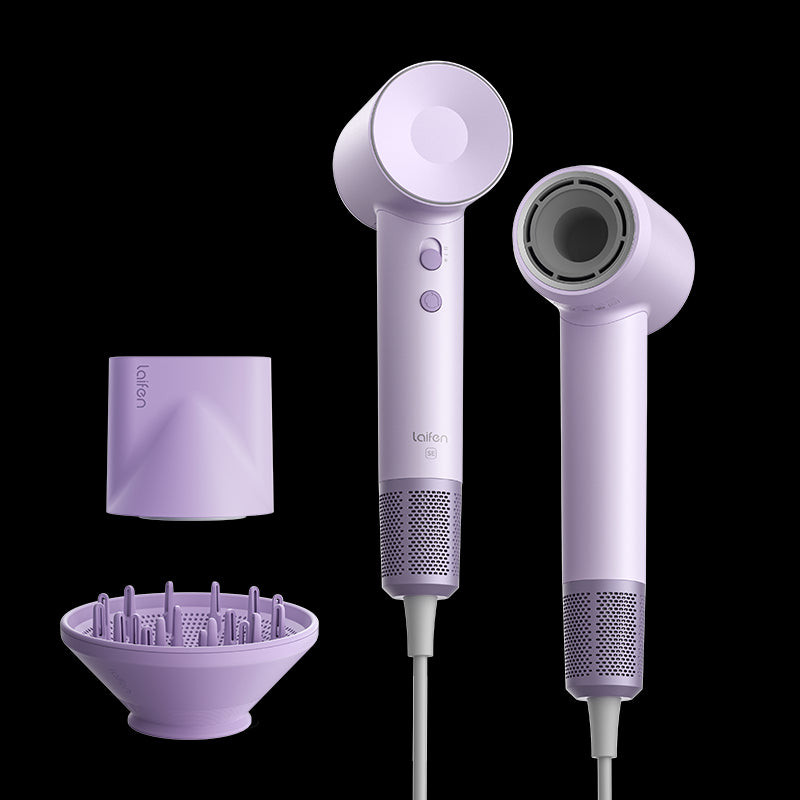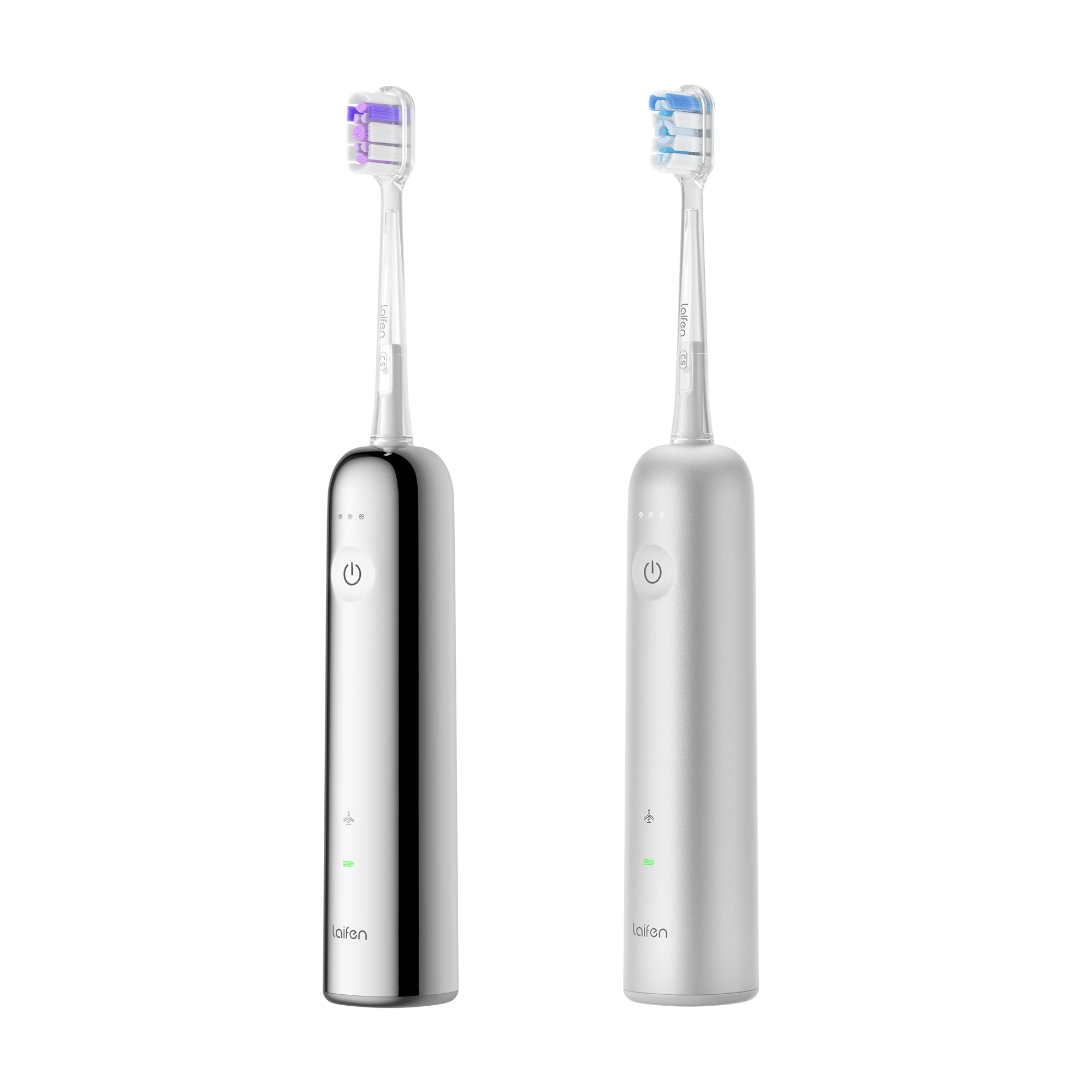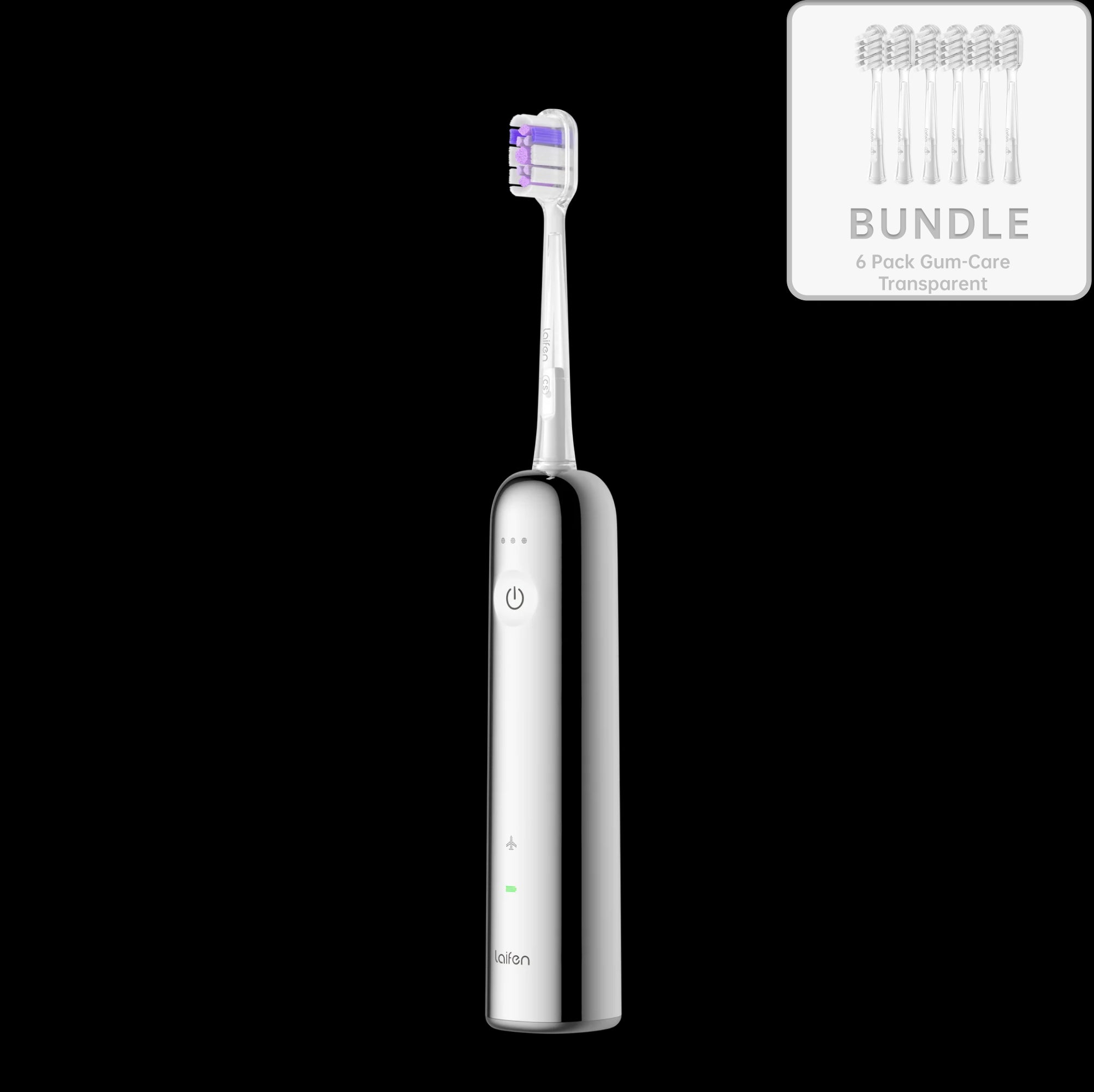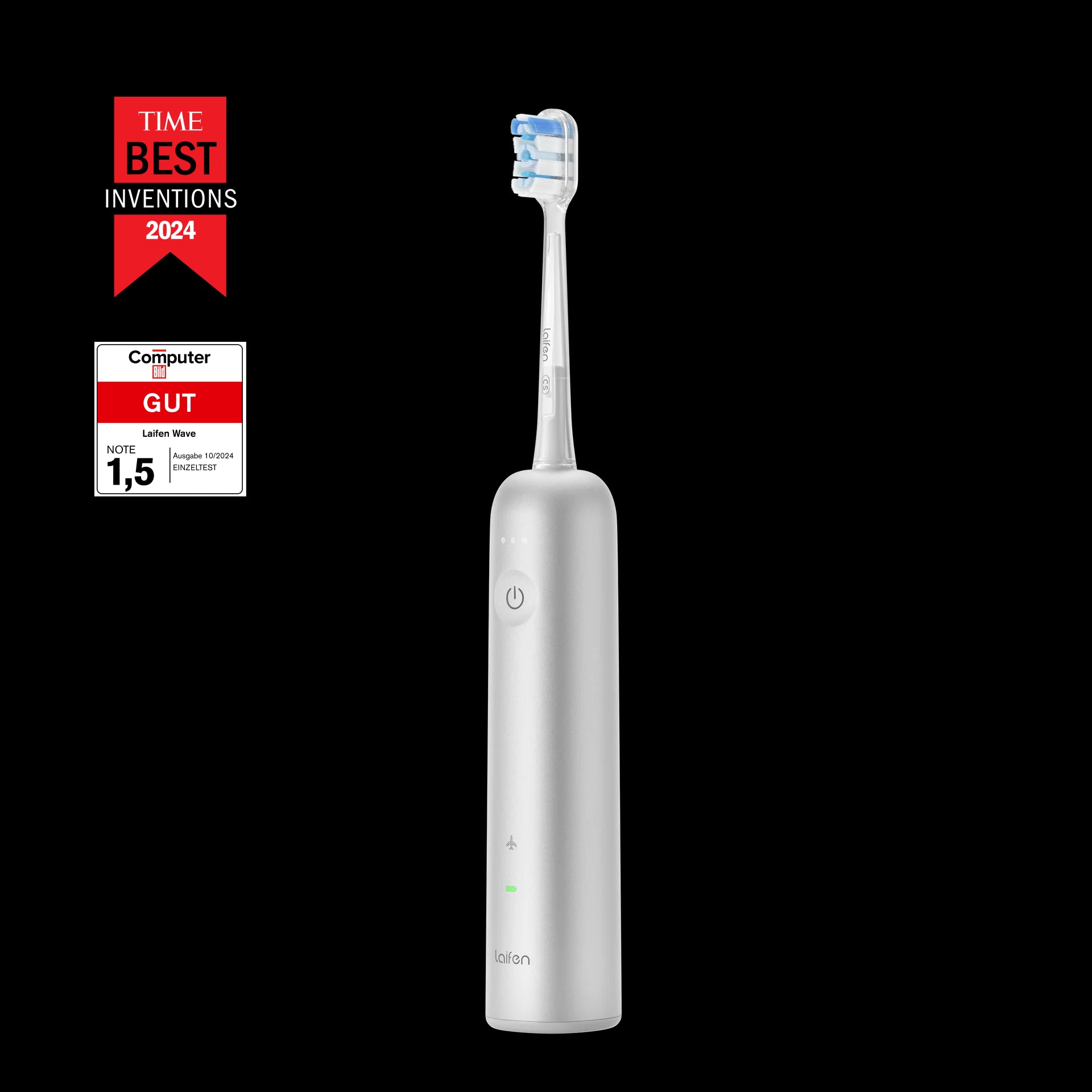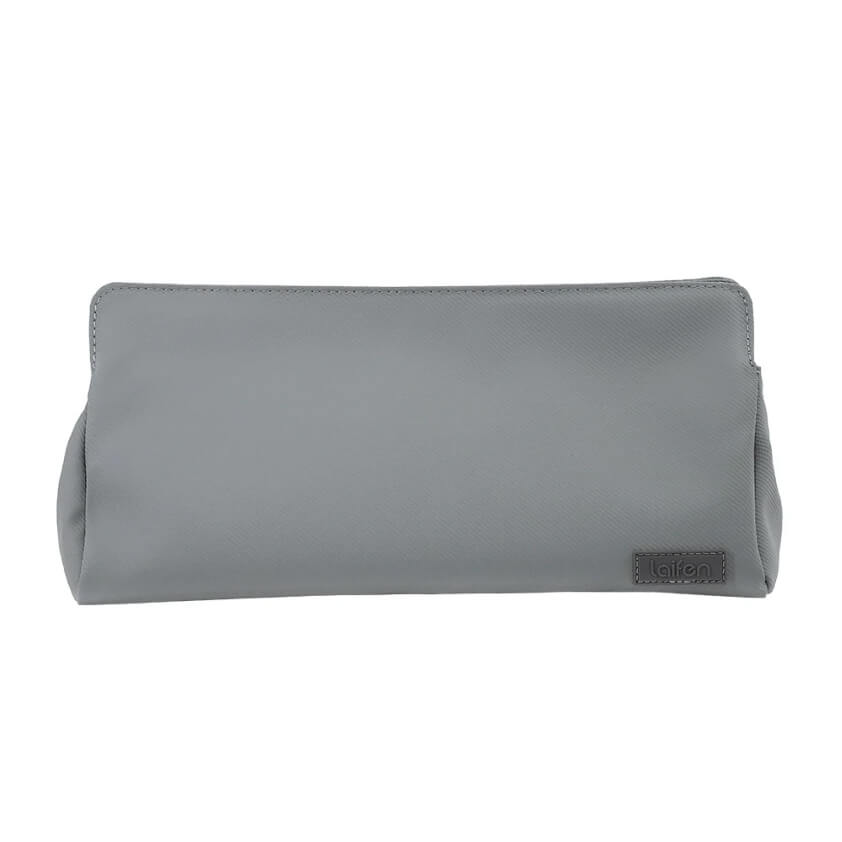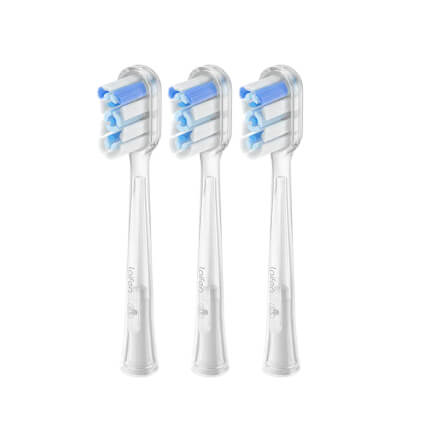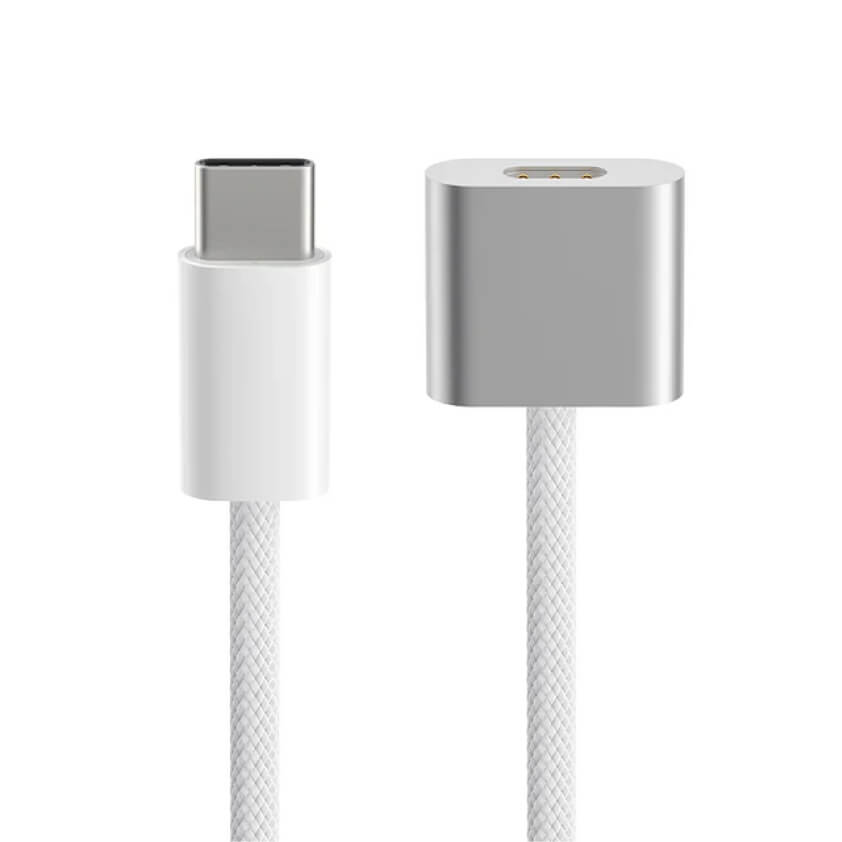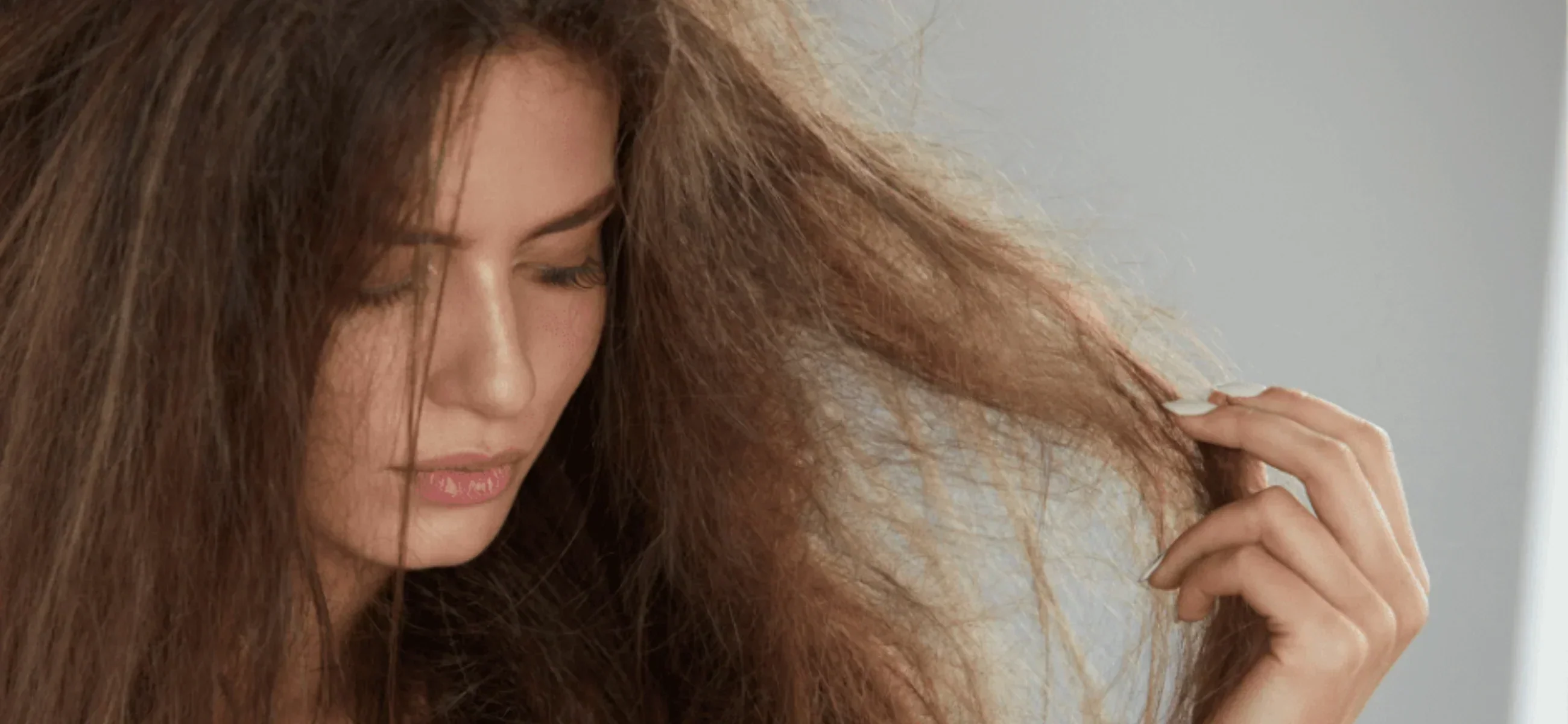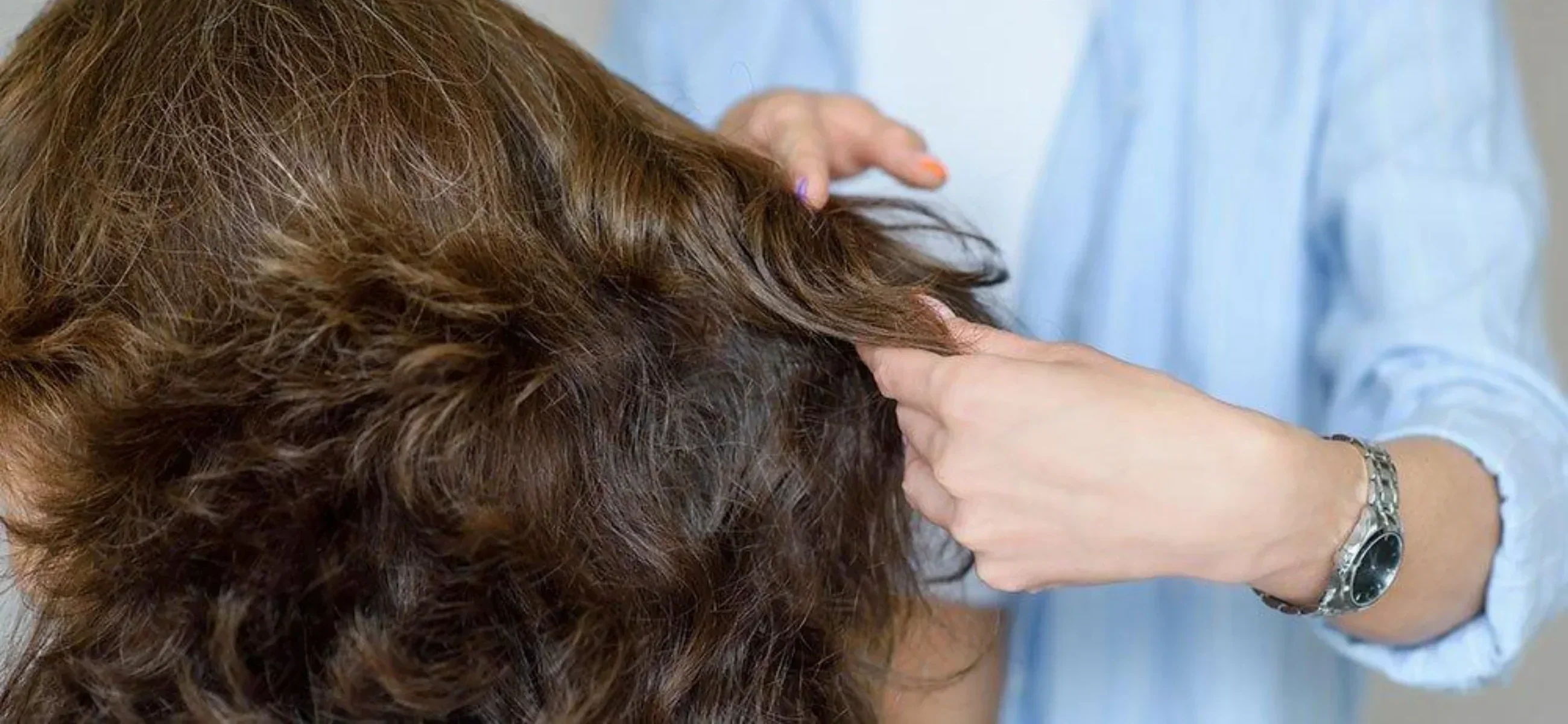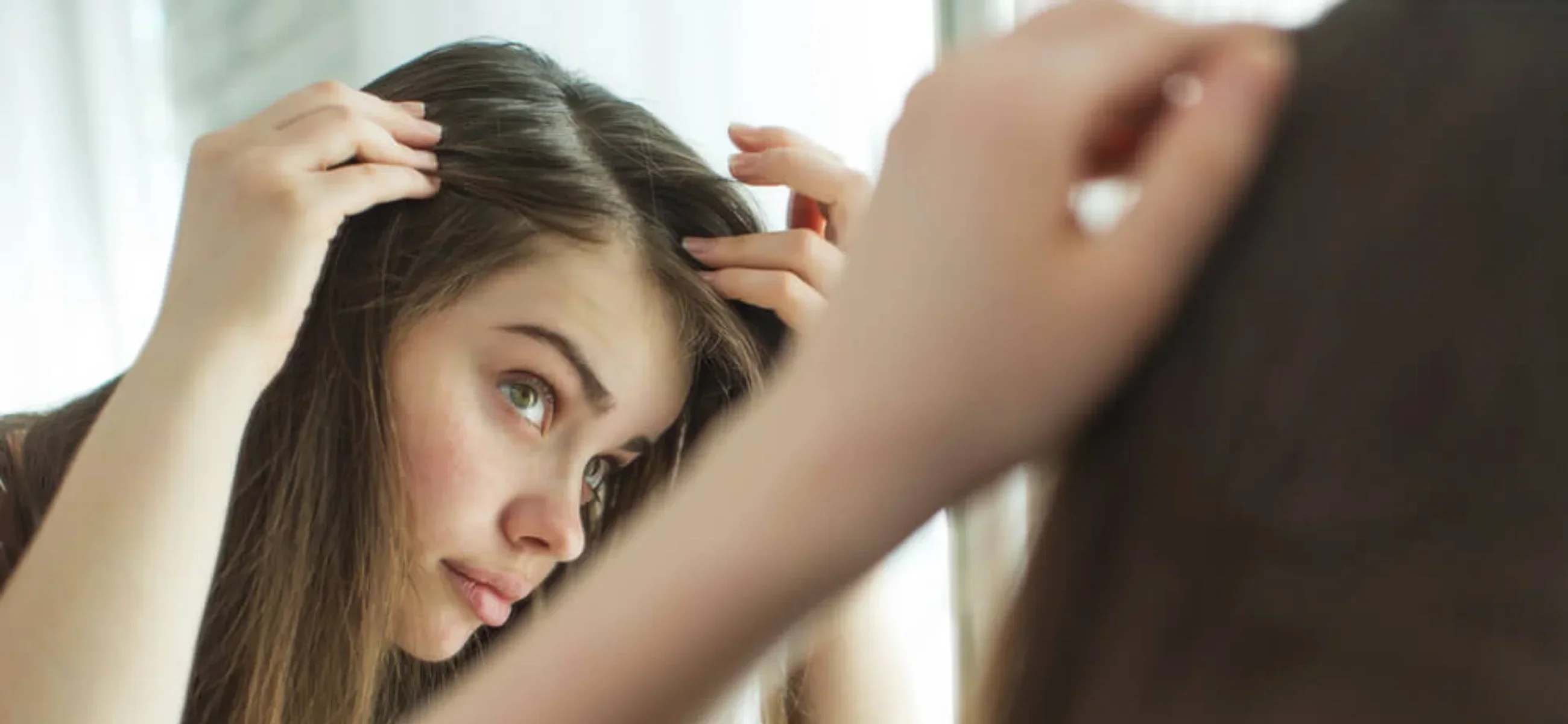
In this article
If your hair turns greasy just a day or two after washing, you might’ve been misled. A common belief is that oily roots are simply the result of not washing hair frequently in the past, as if your scalp is punishing you for old habits. But that theory doesn’t hold up under scrutiny. In fact, some commercial shampoos marketed for “oily hair” can actually trigger more oil production by stripping the scalp too harshly.
According to emerging research, oil imbalance is rarely caused by one single factor. It’s a mix of scalp biology, product choices, environment, and yes, sometimes even marketing tactics. In this article, we’ll go deeper to explore the real reasons behind oily roots and dry ends, many of which aren’t what you’d expect.
Explain oily roots and dry ends
Oily roots and dry ends might sound like a contradiction, but this combination is more common (and more complex) than most people realize.
From a professional standpoint, this imbalance is often the result of how your scalp and hair lengths behave differently over time. Your scalp naturally produces sebum, an oil meant to protect and nourish both skin and hair.
However, when the sebaceous glands become overactive, the roots quickly become greasy.
At the same time, the ends of your hair, which are older and more exposed to heat, friction, and environmental stress, struggle to retain moisture and become dry, brittle, or even split.
What causes oily roots and dry ends
Overactive sebaceous glands
Your scalp has oil glands that secrete sebum. For some people, these glands work overtime, either due to genetics or hormonal changes (especially during puberty, menstruation, or stress). A 2017 dermatology review found that individuals with oily scalps had nearly 30% higher sebaceous gland activity than average, so their roots are greasy within hours of washing.
Aggressive shampoos that strip the scalp
Many shampoos labeled as "deep-cleansing" or "clarifying" can be too harsh. When the scalp is stripped of its natural oils, it often overcompensates by producing even more sebum. Ironically, the products promising to solve oily hair often make it worse.
Heat styling that targets the scalp
Blow drying too close to the roots or using high-heat settings regularly can irritate the scalp and stimulate oil glands. Meanwhile, the ends are left vulnerable to dryness and breakage. This is where using a heat-controlled, ionic dryer like the Laifen Swift Special can make all the difference.

Skipping regular trims
Hair ends are the oldest part of your strands and suffer the most damage over time. Without regular trims, these ends become frayed, dry, and porous. Even if your roots are oily, your ends might be crying out for hydration and a healthy cut every 6–8 weeks.
Product misplacement and overuse
Applying rich conditioners, oils, or serums too close to the scalp can clog follicles and create buildup, accelerating greasiness. On the flip side, avoiding conditioner altogether in fear of oily roots means the ends never get the moisture they need.
Hair type and texture
Fine or straight hair tends to get greasy faster because the natural oils travel down the shaft more easily. On the other hand, curly or coily hair types often struggle with dry ends because the oil has a harder time making its way down the hair’s bends and curves. So depending on your texture, you may be predisposed to both problems at once.
Common mistakes that make it worse
If you’re dealing with oily roots and dry, damaged ends, it’s easy to fall into habits that seem helpful. Sometimes, it’s not what you aren’t doing, but what you’re doing too much of, or in the wrong way.
1. When roots feel greasy, the instinct is often to wash them away. But washing too frequently can confuse your scalp. It strips away the natural oils, causing the sebaceous glands to respond by producing even more.
2. It’s common for people with oily roots to avoid conditioner altogether. But in doing so, the ends become dry, brittle, and prone to breakage. Hydration is still essential; it just needs to be targeted. A mid-length-to-ends-only application helps protect the strands without overloading the roots.
3. Your scalp and your ends are on two very different journeys yet many treat them the same. Rich masks, heavy oils, and smoothing serums can be too much for the scalp, while lightweight shampoos alone can leave ends feeling neglected.
4. Whether it's a blow dryer on full blast or a curling wand too close to the root, excessive heat stimulates oil production at the scalp while robbing the ends of moisture.
How to fix oily roots and dry ends
Double-cleanse with a scalp-focused shampoo
Start with a clarifying shampoo focused on your scalp not your entire hair length. Massage it in with your fingertips (not your nails) to remove excess sebum and product buildup. On the second wash, let the shampoo sit for a minute before rinsing to allow ingredients like salicylic acid or tea tree oil to truly work.
Deep condition but keep it strategic
Your dry ends crave moisture, but your roots do not. Apply deep conditioning masks only to the bottom third of your hair, once a week. Pay attention to ingredients like panthenol, hyaluronic acid, and argan oil. For extra absorption, wrap your ends in a warm towel for 10–15 minutes to help the treatment sink in, without disturbing the scalp's natural balance.
Rethink your drying routine with smart heat
Heat styling can easily trigger excess oil at the scalp and amplify dryness at the ends. This is where the Laifen Swift Special Hair Dryer shines. With its advanced ionic technology and balanced airflow, it smooths frizz and dries hair quickly without overheating.
Use a leave-in conditioner (Not a heavy serum)
Many people reach for thick oils to fix dry ends, but this can lead to buildup and even oil migration toward the roots. Instead, opt for a lightweight leave-in conditioner or mist that can hydrate without weighing down. Spritz onto towel-dried ends after washing and before blow-drying, for softness that lasts all day.
Balance your routine weekly, not daily
Trying to fix both extremes every single wash day can overwhelm your hair. Instead, design your weekly routine with intention, for example, a clarifying wash mid-week, a deep hydration mask on the weekend, and gentle, minimal styling in between. By alternating focus, you support your scalp's oil control while giving your ends the time and care they need to repair.
Drying your hair with less heat damage
If you have oily roots and dry ends, how you dry your hair matters just as much as how you wash it. High heat, harsh airflow, and poor technique can make this imbalance worse. That’s where the Laifen Swift Special Hair Dryer comes in.
Why typical dryers don’t help
Most traditional dryers blast hot air with little control. This heat hits your roots directly, irritating the scalp and prompting it to produce more oil. Meanwhile, the ends become drier, more fragile, and prone to breakage.
How Laifen Swift Special makes a difference

Laifen Swift Special uses intelligent temperature regulation to keep the heat consistent and gentle. That means your scalp stays cool and calm.
With precise airflow settings, you can dry your roots quickly without overheating them. And with lower settings, you can dry the ends without causing further dryness or frizz.
The built-in ionic feature helps to seal in moisture and smooth the hair cuticle, especially important for dry, brittle ends. Your hair looks shinier and feels softer, with no need for extra serums or heavy styling products.
Its ergonomic design makes it easy to direct the airflow exactly where you need it, away from the scalp when needed, and onto the ends when they need some extra care.
A simple routine that works
After towel-drying with a microfiber cloth, section your hair. First to dry the roots on a low heat, high airflow setting, just enough to lift the moisture without heating the scalp. Then, switch to a cooler setting for the mid-lengths and ends. Always finish with a blast of cool air to help close the cuticle and lock in moisture.


